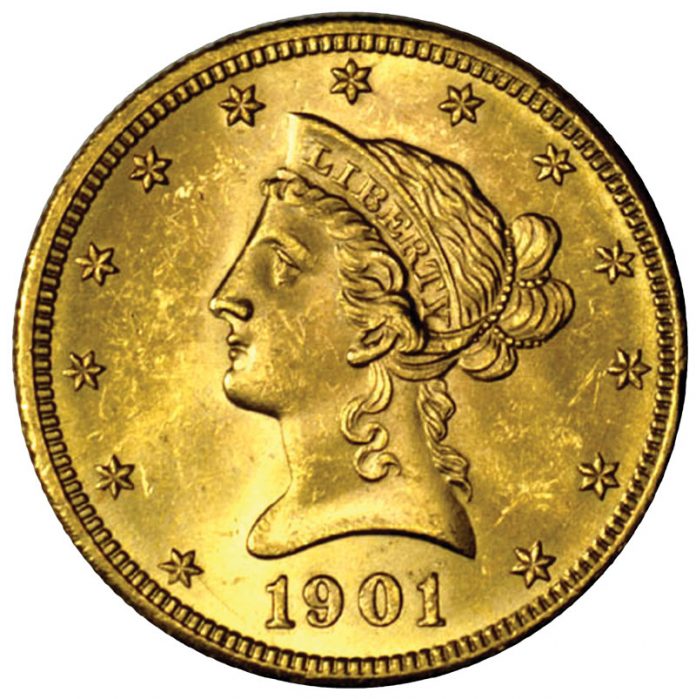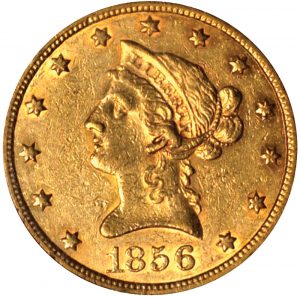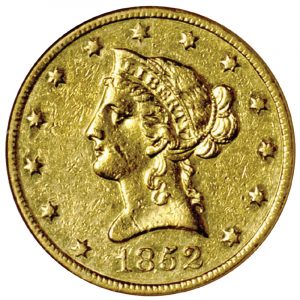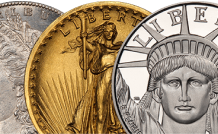
These coin value tips help buyers get the best coins for the least money by understanding grade, market price, supply and demand plus where to buy.
Coin Grading
Grade refers to a coin’s level of preservation: how many nicks or scratches or other imperfections it has. Coins are graded on a scale of one to 70, with higher numbers signifying higher grades. One represents a coin that is so well worn that it’s barely identifiable as to its type. 70 represents a perfect coin: a coin that when viewed under a five-power magnifying glass has no visible imperfections.

60 through 70 represent the Mint State (MS) grades. A coin graded MS-60 can have so many nicks and scratches and flaws that it might look as if Godzilla used it as a teething ring. MS-65 is the industry standard for “Gem.” MS-66 through MS-69 are the near-flawless super-grade or wonder coin assignations. With each grade level above MS-66, the value might double or triple.
Grade Names
Grade names are used in addition to numerical grades. In ascending order, these word grades are About or Almost Good; Good; Very Good; Fine; Very Fine; Extra or Extremely Fine; About or Almost Uncirculated; and Mint State.

A Proof is not a special Mint State coin. Proof refers to a method of manufacture, not a grade. Although Proof coins are struck using specially polished dies and specially selected planchets (metal discs) to assure a chromium-like brilliance, they can circulate or be spent. Proofs are also graded on the one through 70 scale. A Proof coin grading less than Proof-60 is referred to as an “impaired Proof.”
The Professional Coin Grading Service (PCGS) and the Numismatic Guaranty Company (NGC) are the coin field’s highest-volume authentication and grading services. PCGS and NGC encapsulate coins in sonically-sealed hard plastic holders that are tamper-evident. Most buyers of valuable coins demand only coins that have been certified by leading grading services. These services offer guarantees of authenticity and grade, and their coins often trade sight-unseen based on their certified grade.
Supply & Demand
Supply is the number of specimens available. Among the most important reflections of supply are the population and census reports issued by leading grading services. PCGS and NGC issue these reports regularly, and they indicate how many coins have been certified in the various grade levels.
These reports are helpful, but imperfect because they don’t fully measure the effect of resubmissions. Often, dealers will send the same coin to a grading service over and again in hopes of receiving a higher grade.
Demand refers to the number of people who desire a particular type of coin. A coin may have a mintage of only 200, but if there are just 20 people who want it, its value may not be especially high. On the other hand, a coin with a mintage of nearly 500,000 may have a million people who want it, and, therefore, may command a substantial premium.
Determining Market Price
A coin certified by a leading grading service combined with a reliable price guide is the cornerstone of consumer protection for a coin buyer. A consumer armed with a trustworthy price guide and the certified coin’s description and grade can be reasonably certain of getting good value. Match the certified coin’s exact description to the price guide, and you have the ballpark value of the coin.
The COINage Price Guide is a superb starting point for determining the retail value of your coins. Grading services PCGS and NGC also have helpful price guides on their websites.
Grading verifier Certified Acceptance Corporation also has an exceptional valuation guide.
Know Your Dealer
Even if you know your coins, it pays to know your dealer. It helps to know how long your dealer has been operating under the same entity name. Look for an established dealer that has been operating under the same name for several years.
Pay attention to complaints and ratings of dealers by the Better Business Bureau (BBB). Dealers with ratings of A+ are preferable. Pay close attention to the number of complaints, if any, and how they’re settled. Dealers should have a record of responding immediately to complaints. The BBB will only allow confirmed customers of an entity to post a rating.
Google and Yelp reviews are not nearly as valuable as BBB records, as Google and Yelp don’t confirm that the consumers giving the ratings actually did business with the dealers. Often, consumers will bring counterfeit coins to dealers, and these folks will be disappointed and disbelieving when informed during free appraisals that their coins are fake, thus leading to one-star reviews.
To subscribe to COINage magazine click here. Story by Scott A. Travers.














